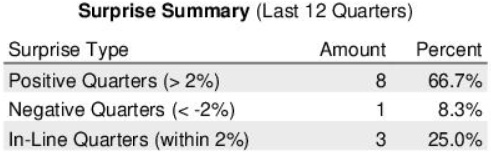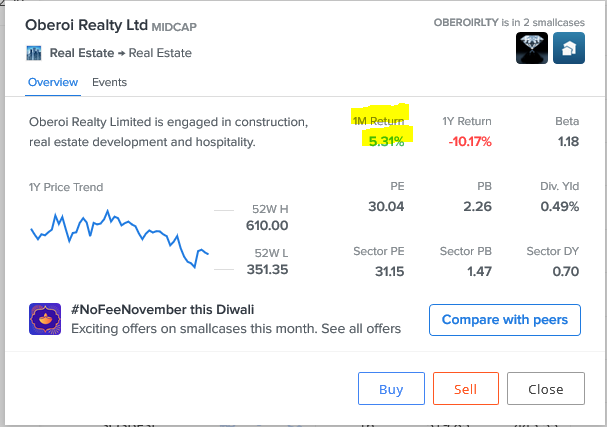I’m sure most of you have looked at the Thomson Reuter’s Stockreport+, which was newly introduced by Zerodha. This is an awesome fundamental report, giving you a brilliant perspective on the fundamentals of the company and the industry it belongs to.
If you have not looked at it yet, I’d suggest you look at the sample report and see what’s available in the report.
Recently, I had the opportunity to host Bala Ilango, from TR to do a webinar on how to understand this report. While doing so, I realized there are few features which are extremely useful to the trading community. I thought I’d share this with you all here.
Surprise Summary ( for Option traders)
TR gives you a summary of the earning surprise a company has given over the last 12 quarters (3 years). A positive surprise is when the earnings are higher than 2% of estimates, negative surprise in case of less than 2%, and in line if the earnings are as per estimate.
Here is how it looks for Infosys -

As you can see, Infy tends to give more positive surprises than negative surprises. 66.7% positive surprise as opposed to 8.3% -ve surprise.
I think this is great information to have when you are trying to set up earnings based option strategies. For example, if I were to trade Infy for the next earnings, I’d probably look at a bullish spread if not for writing far OTM Puts simply because the company has a tendency to put up a positive surprise.
But here is the tricky part, there are times when a company posts great results (better than expectation) but the stock price tumbles. How do you deal with it?
I guess this is where the seasonality of the returns play a huge role.
Return Seasonality
The Stockreport+ report contains the seasonality of returns. Have a look at this -

From this, I know on average (for last 10 years), Infy has delivered 1.1% return in the month of Oct. So assuming Q2 results are due in Oct, I now have a greater confidence (2 level data points) in setting up a bullish spread.
There is another use case for the seasonality of returns - with this, I know what the historical monthly price behavior is. I can use this to identify which strike prices to write. For example, Infy closed @ 746 on 1st Oct 2018. I know on average, Infy does 1.1% in the month of Oct. This means, the approximate price of Infy around expiry is -
= 746 *(1+1.1%)
= 754
So at the beginning of the month, I can think of writing strikes higher than 760. In fact, Infy is trading at 681 as I write this -

Smart Stoploss
One of the most painful things I often here is this - ‘My stop-loss triggered but, the stock moved in my direction after hitting my SL’.
This must have happened with you as well right? Have you ever wondered why?
This is because, most of the times, traders do not factor in the daily volatility of the stocks. Think about this, Infy is trading at 681, I have an intraday long position. What should be my SL? I know people blindly keep 1 or 2% as SL. But this is not the right approach.
Have a look this -

The average intraday swing for Infy is 2.3% with the largest swing at 4.4%. Given this, do think a SL of 1 or 2% makes sense?
Definitely not!
The SL should be at least 2.3% or higher!
I find this extremely helpful in deciding a meaningful stop loss for my intraday trades.
Also, do pay attention to other metrics like daily returns, monthly returns, and the standard deviations. All these metrics helps you in setting a well thought of F&O trades
And please dont forget, this report has a ton of fundamental information which you can use for investing!
Happy trading!

